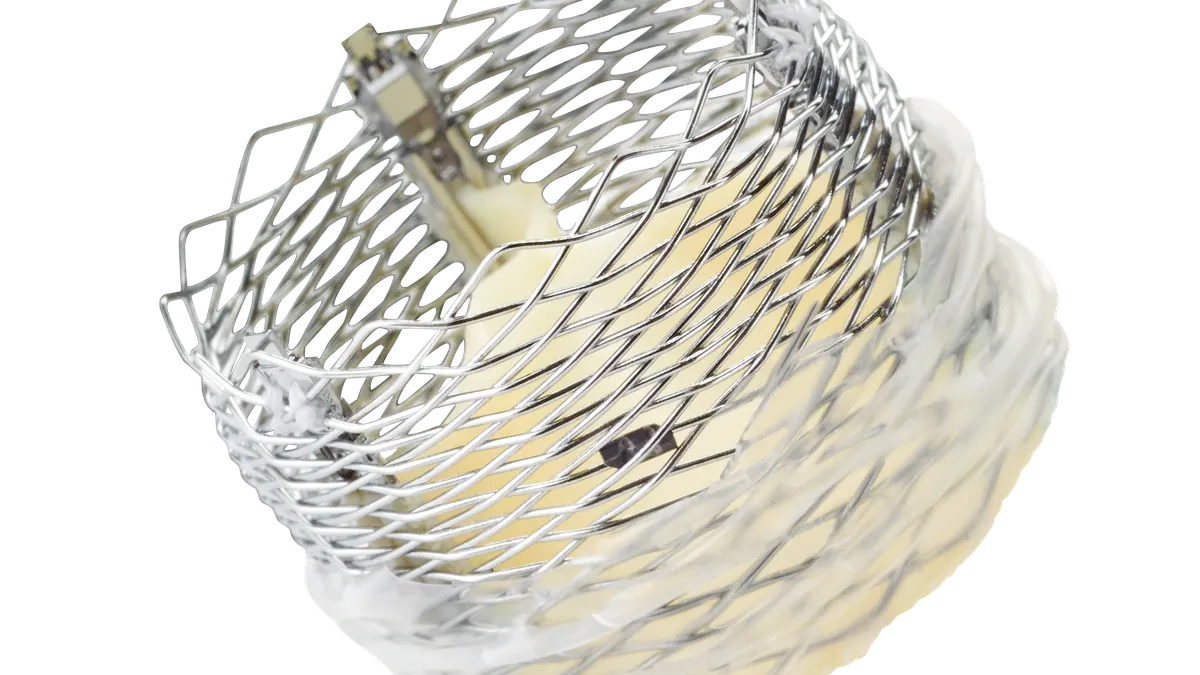Dive Brief:
-
A review published in JAMA Cardiology on Wednesday has identified situations in which the transcatheter aortic valve replacement (TAVR) devices sold by Boston Scientific, Edwards Lifesciences and Medtronic may have slight advantages over each other.
-
The cardiologists found the valves are similarly suitable for use in most aortic stenosis patients but differences in design, notably the expansion mechanisms, mean they each have small benefits in certain circumstances.
-
Understanding how factors specific to a patient and their anatomy match up to the strengths and weaknesses of each device could ensure the selection of the device most likely to lead to positive outcomes.
Dive Insight:
The TAVR market has emerged as a multi-billion dollar battleground for Boston Scientific, Edwards, Medtronic and the developers of as-yet-unapproved rival devices. Yet, there is relatively little data on how the devices compare, with the authors of the JAMA Cardiology review identifying just three head-to-head trials of TAVR products. In the absence of large-scale direct comparisons, registry studies such as analyses based on French data posted last year have taken on greater significance.
Noting the limitations of existing data, the authors of the review declined to claim superiority of one TAVR device over the others. However, they see enough clinical data and knowledge of the different designs of the devices to identify certain situations in which one or other of the products may have a slight advantage.
For example, the authors state Edwards’ balloon-expandable Sapien 3 valves may work better than other TAVR devices in a patient with an extremely large annulus. That position is underpinned by the experience of surgeons who have overfilled the Sapien 3 balloon to adapt to the anatomy of people with unusually large annuli.
Conversely, the cardiologists see advantages to supra-annular valves in patients with small annuli. The supra-annular design, the only FDA-approved example of which is Medtronic’s CoreValve range, may achieve better hemodynamics and avoid severe prosthesis-patient mismatch in patients with small annuli, according to the authors of the review.
The review identifies overlaps between the benefits of Medtronic’s self-expanding supra-annular valves and Boston Scientific’s mechanically expandable intra-annular Lotus devices. In the view of the cardiologists, both designs are well suited to patients who are intolerant to rapid pacing or have dense annular or subannular calcium.
Mechanically expandable valves have one unique use case, according to the review. The case applies to patients with prior permanent pacemaker implants. In designing a device that minimizes paravalvular leak, Boston Scientific inadvertently raised the risk of subsequent permanent pacemaker implantation.
A redesign lowered the rate of pacemaker implantation, which fell from 37% in the first generation to 20% with Lotus Edge valves with a feature called Depth Guard meant to lower left ventricular outflow tract interaction and permanent pacemaker rates, but it remains above the sub-10% rate seen in trials of Edwards’ Sapien devices. Those differences are less relevant to patients with existing permanent pacemaker implants, potentially making the Lotus valves a good choice in that population.
The authors of the review want to see large head-to-head comparisons of the valves to support more informed assessments of their strengths and weaknesses but acknowledge the difficulties of running such studies. Notably, the cardiologists state large studies with “complex composite end points with wide noninferiority margins” would be needed to detect differences in outcomes among patients treated with the various valves.










